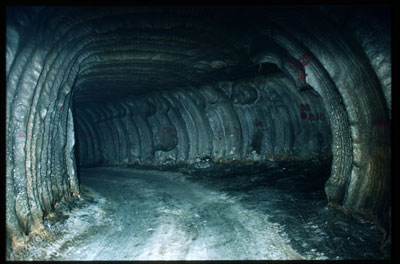SPR - Click to enlarge US Department of Energy announced yesterday offered for delivery between October 1 and November 30, 11 mln barrels of sour crude oil from the Strategic Petroleum Reserves. The move has nothing to do with operationalizing President Trump’s complaint that oil prices were too high. Instead, the sales are part of the fiscal compromise in 2015 budget legislation and the health care act of 2016. The Strategic Oil Reserves was established in after the 1970s oil embargo. It can hold over 700 mln barrels. It had been tapped to ease emergencies like the aftermath of Hurricane Katrina (2005) or supply shocks, like the dramatic drop in Libyan output (2011). However, in recent years, Congress has passed
Topics:
Marc Chandler considers the following as important: 4) FX Trends, Featured, newsletter, Oil, SPR
This could be interesting, too:
Nachrichten Ticker - www.finanzen.ch writes Die Performance der Kryptowährungen in KW 9: Das hat sich bei Bitcoin, Ether & Co. getan
Nachrichten Ticker - www.finanzen.ch writes Wer verbirgt sich hinter der Ethereum-Technologie?
Martin Hartmann writes Eine Analyse nach den Lehren von Milton Friedman
Marc Chandler writes March 2025 Monthly
US Department of Energy announced yesterday offered for delivery between October 1 and November 30, 11 mln barrels of sour crude oil from the Strategic Petroleum Reserves. The move has nothing to do with operationalizing President Trump’s complaint that oil prices were too high. Instead, the sales are part of the fiscal compromise in 2015 budget legislation and the health care act of 2016.
The Strategic Oil Reserves was established in after the 1970s oil embargo. It can hold over 700 mln barrels. It had been tapped to ease emergencies like the aftermath of Hurricane Katrina (2005) or supply shocks, like the dramatic drop in Libyan output (2011). However, in recent years, Congress has passed legislation that entails the liquidation of some of the reserves as part of compromises to fund the federal government. Most recently, the budget agreement struck earlier this year provides for the sale of 100 mln barrels of oil by 2027. It is the largest non-emergency drawdown and is equal to around 15% of the current reserves.
There is a broad framework of the schedule of the sales. First, under the 2015 agreement, $350 mln of oil (of roughly 5.2 mln barrels at current prices) needs to be sold in the current fiscal year to finance the modernization of the reserves. Second, under the 2018 budget agreement calls for 30 mln barrels to be sold between FY22 and FY25, 35 mln barrels year in FY26 and FY27. The Congressional Budget Office projected the 100 mln barrel liquidation to raise about $6.35 bln. The budget agreement also reduced the minimum required level of SPR from 450 mln barrels to 350 mln. As of early February, when the budget agreement was struck the SPR held about 665 mln barrels. The average price of the oil purchased for the SPR was a little below $30 a barrel.
The sales starting October 1 will coincide with the reinstatement of the US oil embargo against Iran (November 3). The US is threatening to sanction other countries/companies if they violate the embargo. Many expect the embargo to cut as reduce Iranian sales by as much as a million barrels. China, one of Iran’s largest customers, has been using Iranian tankers to deliver the oil. The Trump Administration can still invoke emergency powers to liquidate as much as 30 mln barrels to head off a possible disruption caused by the embargo on Iran. Given the procedural requirements, if part of the motivation is to boost the chances of lower gasoline price by the November mid-term elections, a decision will have to be made shortly.
Since the strategic reserve was established, the US emerged as a major energy producer and a significant exporter. It has become considerably more energy self-sufficient. Nevertheless, there is the concern that reserves were built for an emergency and ought not to be drawn down barring an emergency. US oil consumption is almost 20 mln barrels a day. Domestic output can provide around half. At full capacity, the SPR would have around 70 days. It has about 60 days now and making conservative assumptions, given the current commitments and ideas that improved efficiency and growth of alternatives will offset economic growth, in a decade, Strategic Reserves may cover close to 40 days.
Tags: Featured,newsletter,OIL,SPR

